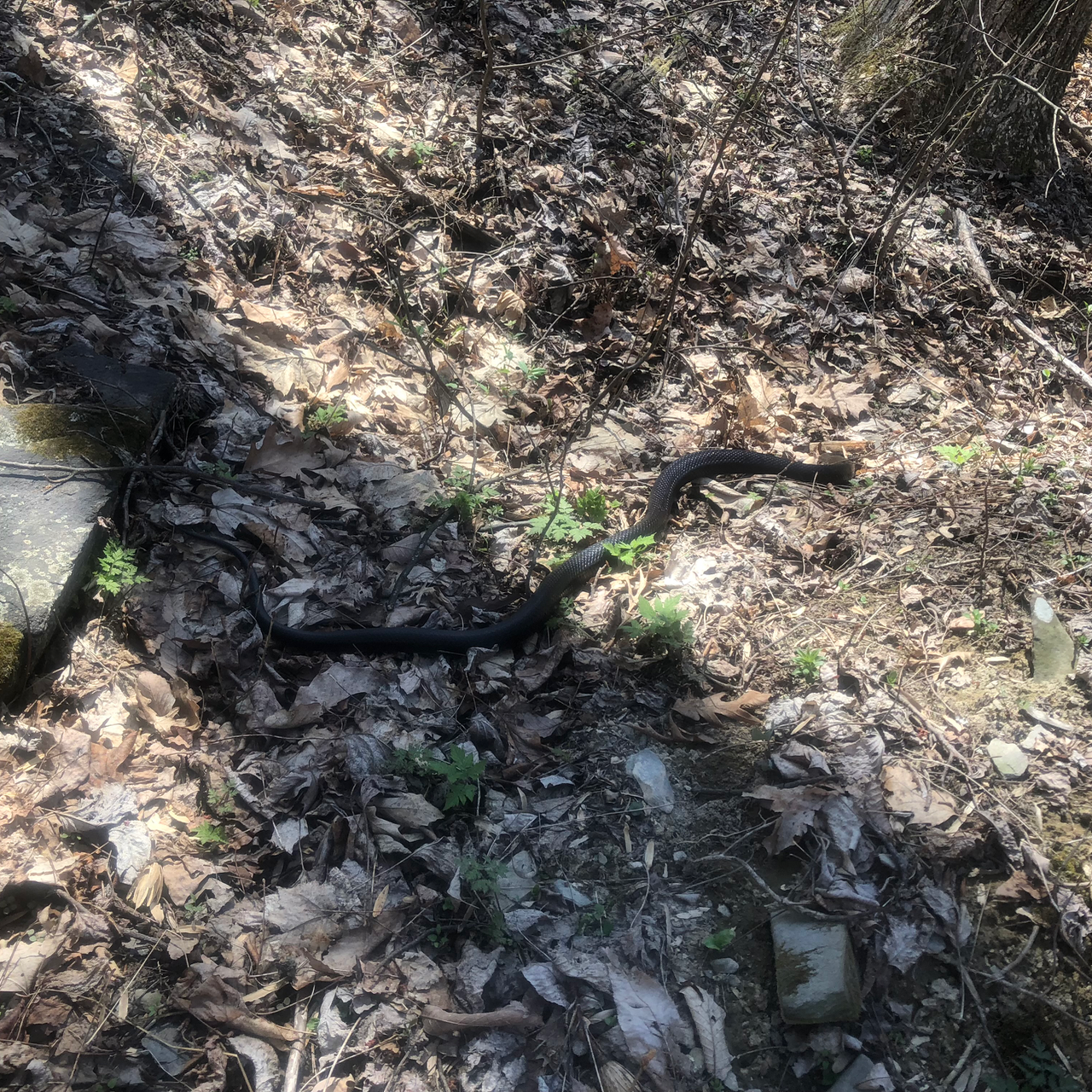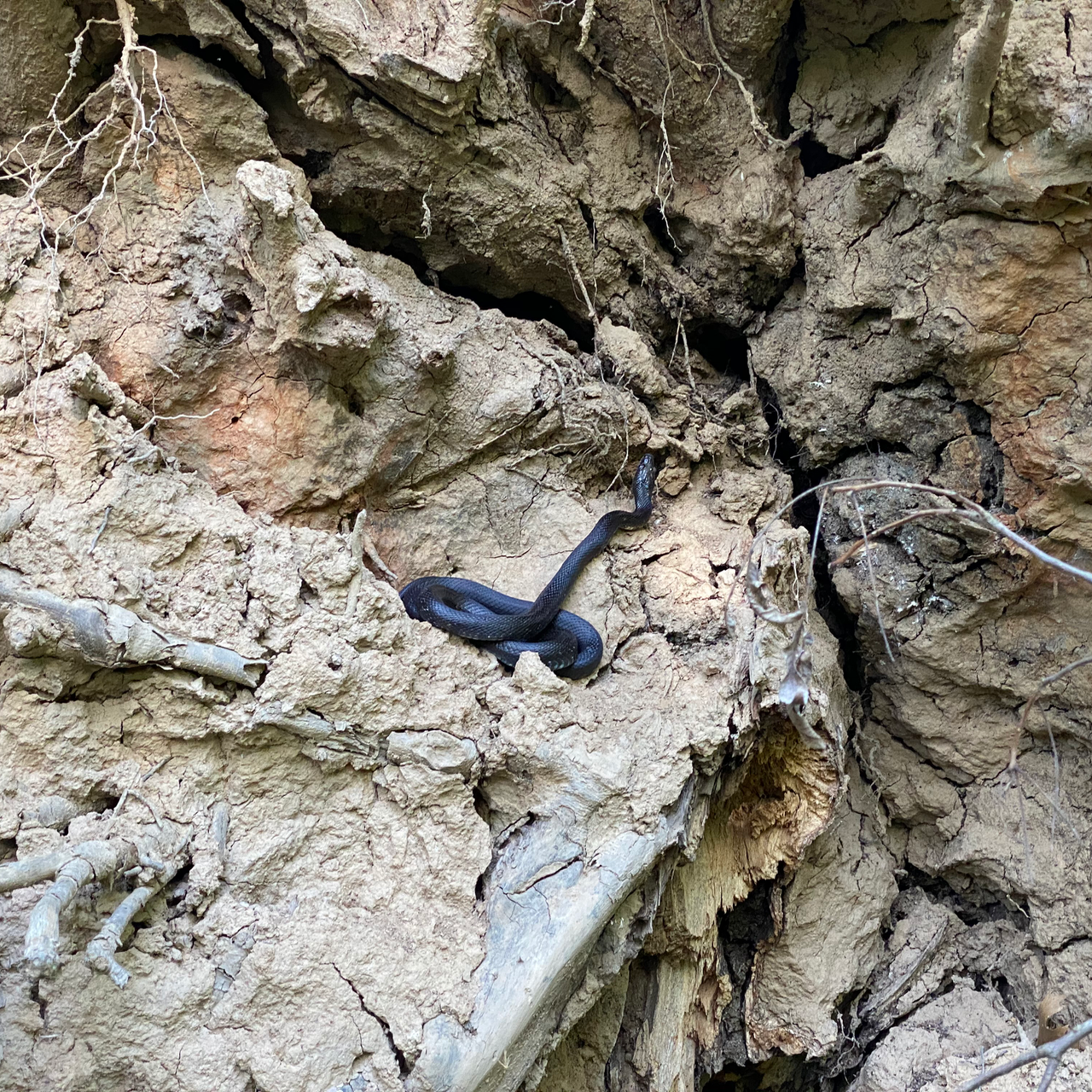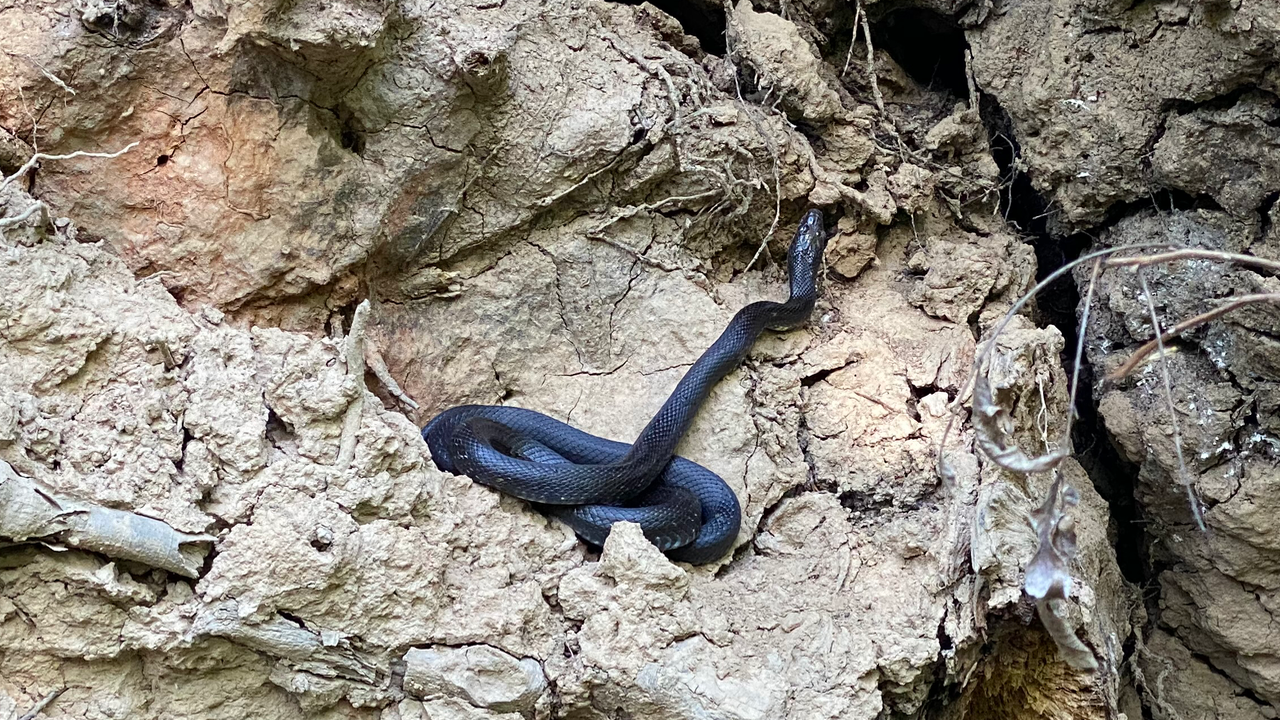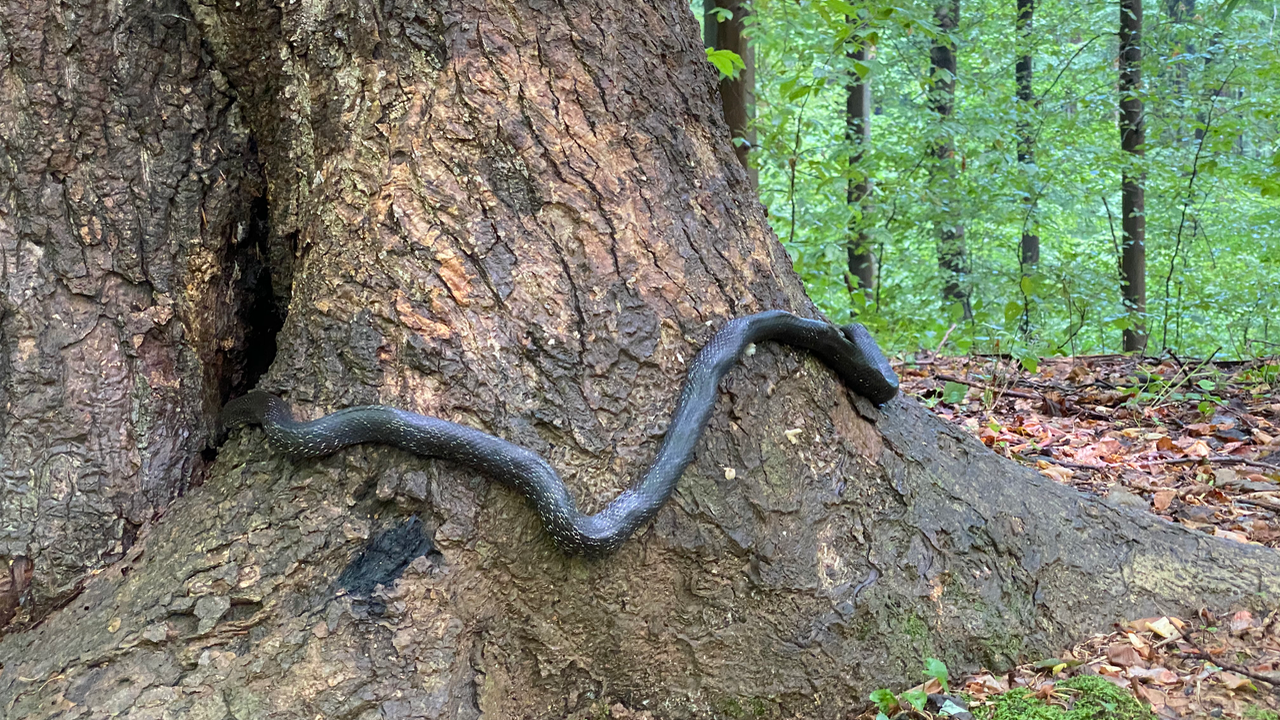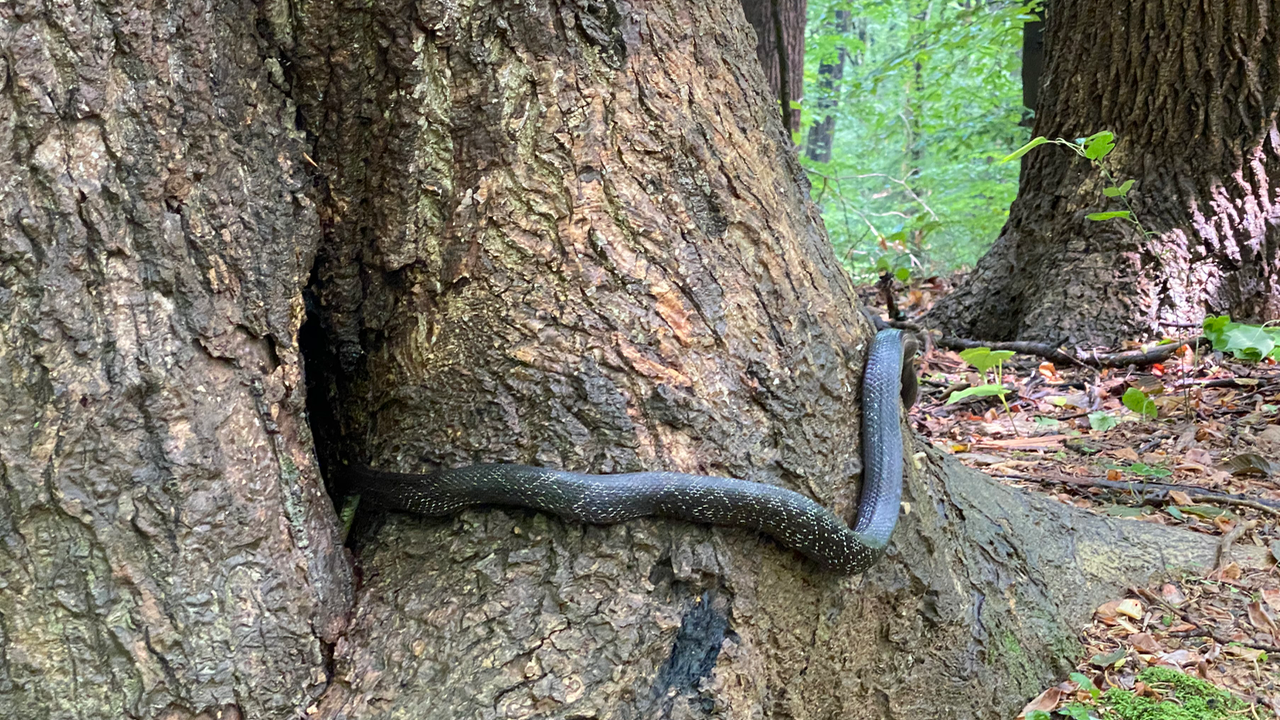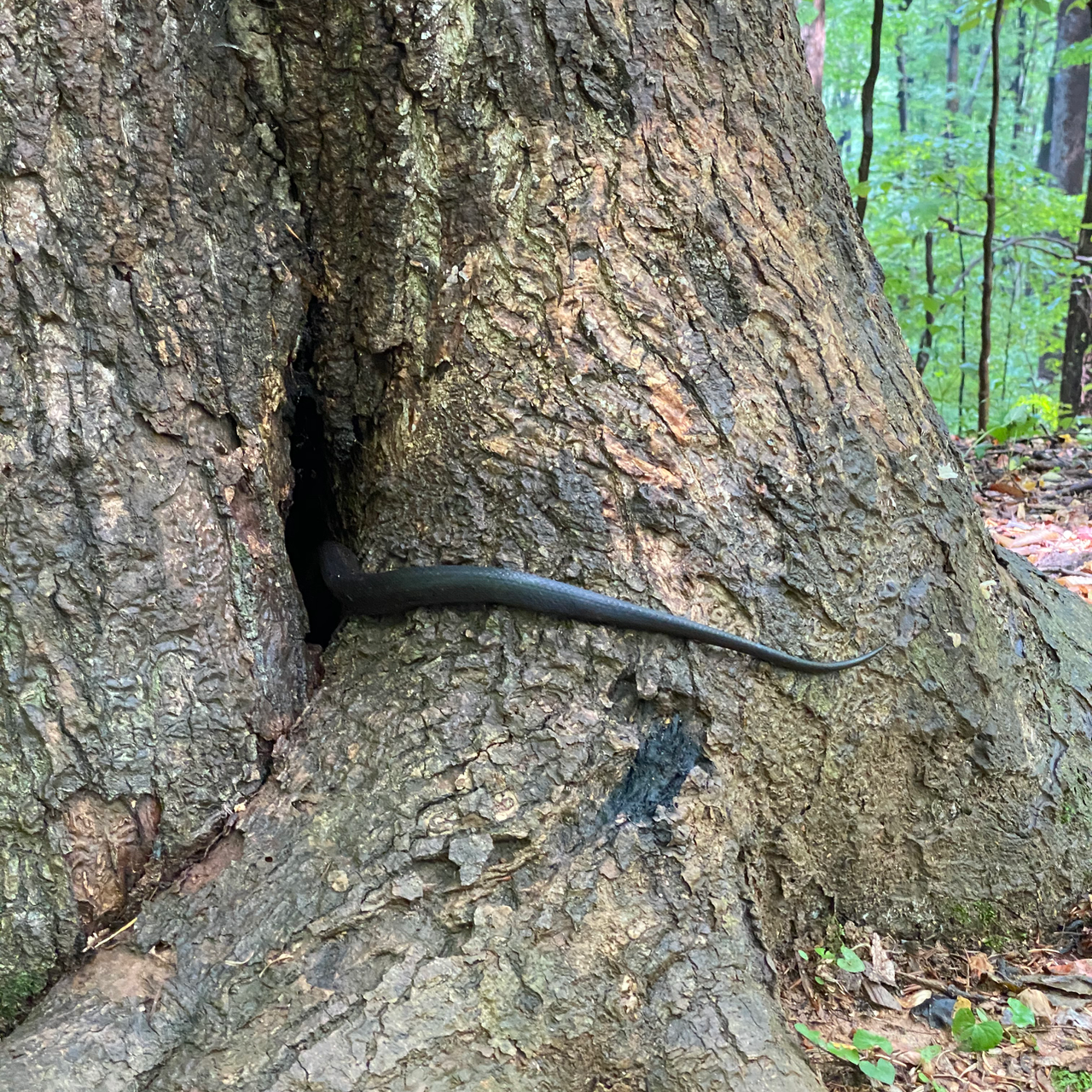Even though these snakes are generically called black snakes, they are really Eastern Rat Snakes. These snakes are found throughout Virginia. They are actually the most commonly found snake in Virginia. Find out more and look below for some interesting photos.
Physical Characteristics
Coloring
Eastern rat snake juveniles look similar to a venomous copperhead snake. They are light colored with a pattern of squares and diamonds. As they mature, the pattern fades and they slowly turn black. Mature snakes are in Northern Virginia are uniformly black on their dorsal (back side), however in some southwestern counties, they retain a little pattern on their backs.
Size and Shape
These snakes can grow to lengths of 3-5 feet. Instead of being round, they are loaf shaped. They also have weakly keeled scales. This means that the individual scales are obvious to the observer. Tightly keeled scales appear much smoother and the scales are not as distinct.
Eastern Rat Snake Going into Tree Hole
Look But Don’t Touch
Although not venomous, they will bite. As with any other wildlife, leave them alone. When cornered, they can shape their heads to resemble a venomous species. They also assume a kinked posture as seen in the photo.
What do Eastern Rat Snakes Eat?
Eastern rat snakes are carnivores. They like to eat small rodents, birds, and bird eggs. These snakes are good tree climbers. That’s how they get the birds and their eggs. They are constrictors. As the weather heats up in the spring and summer, their metabolism increases, therefore they require more food. It is probably easier to spot one during this time.
Habitats
Eastern Rat snakes are terrestrial and arboreal. In other words, these snakes are found on land and in trees. They live just about anywhere except directly on the beach. You can find them in fields, forests, barns, wetlands, and around old structures. These snakes have a range of up to about 600 m in diameter. They frequently cover their entire range over the course of their active season. Interestingly, they commonly hibernate and live in hollow trees and stumps. Many hibernate for several years in the same spot. How cool was it that I saw this one! It’s probably lived and hibernated in this spot for many years.
References:
First, the Virginia Herpetological Society is an excellent resource. It is the best one I found.
Second, this video about Rat Snakes is good.
Finally, this link has videos about a lot of interesting snakes.
